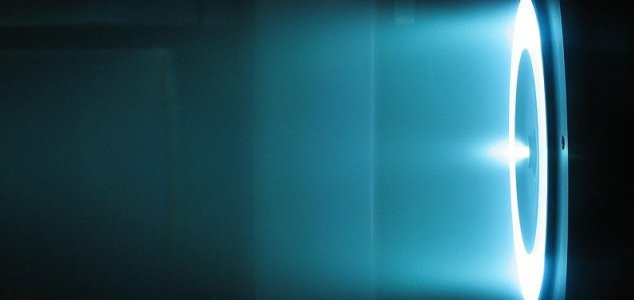Space & Astronomy
September 1, 2018 · 13 comments
13 comments

Ion propulsion will prove invaluable for future deep space missions. Image Credit: NASA / JPL-Caltech
The main advantage of ion thrusters over conventional chemical rockets is a much greater fuel efficiency, making it possible to propel a spacecraft up to much higher velocities.
Rocket manufacturer Aerojet Rocketdyne is currently building and testing Hall thrusters as part of NASA's Advanced Electric Propulsion System (AEPS) program.
Most recently, the firm has reported that its early systems integration test has been successfully completed, proving that the system can convert power at a high level of efficiency.
"By staying on the cutting edge of propulsion technology, we have positioned ourselves for a major role not only in getting back to the Moon, but also in any future initiative to send people to Mars," said Aerojet Rocketdyne CEO and president Eileen Drake.
"Our AEPS discharge supply unit performed exceptionally, yielding significant conversion efficiency improvements important for future demanding missions."
"These results are a testament to the Aerojet Rocketdyne team's focus and dedication to advancing the state of the art in this critical in-space technology area."
Source: Space Daily | Comments (13)
Ion propulsion system undergoes new tests
By T.K. RandallSeptember 1, 2018 ·
 13 comments
13 comments
Ion propulsion will prove invaluable for future deep space missions. Image Credit: NASA / JPL-Caltech
A revolutionary new type of propulsion system for use in deep space missions has reached another milestone.
Known as the Hall-effect thruster (HET), the new propulsion system uses electric and magnetic fields to ionize a propellant (such as argon or xenon) and then expels the ions to produce thrust.The main advantage of ion thrusters over conventional chemical rockets is a much greater fuel efficiency, making it possible to propel a spacecraft up to much higher velocities.
Rocket manufacturer Aerojet Rocketdyne is currently building and testing Hall thrusters as part of NASA's Advanced Electric Propulsion System (AEPS) program.
"By staying on the cutting edge of propulsion technology, we have positioned ourselves for a major role not only in getting back to the Moon, but also in any future initiative to send people to Mars," said Aerojet Rocketdyne CEO and president Eileen Drake.
"Our AEPS discharge supply unit performed exceptionally, yielding significant conversion efficiency improvements important for future demanding missions."
"These results are a testament to the Aerojet Rocketdyne team's focus and dedication to advancing the state of the art in this critical in-space technology area."
Source: Space Daily | Comments (13)

The Unexplained Mysteries
Book of Weird News
AVAILABLE NOW
Take a walk on the weird side with this compilation of some of the weirdest stories ever to grace the pages of a newspaper.
Click here to learn more

Support us on Patreon
BONUS CONTENTFor less than the cost of a cup of coffee, you can gain access to a wide range of exclusive perks including our popular 'Lost Ghost Stories' series.
Click here to learn more
Ancient Mysteries and Alternative History
Russia and the War in Ukraine
Spirituality, Religion and Beliefs
United States and the Americas
Total Posts: 7,768,327 Topics: 325,021 Members: 203,766
Not a member yet ? Click here to join - registration is free and only takes a moment!
Not a member yet ? Click here to join - registration is free and only takes a moment!





























Please Login or Register to post a comment.